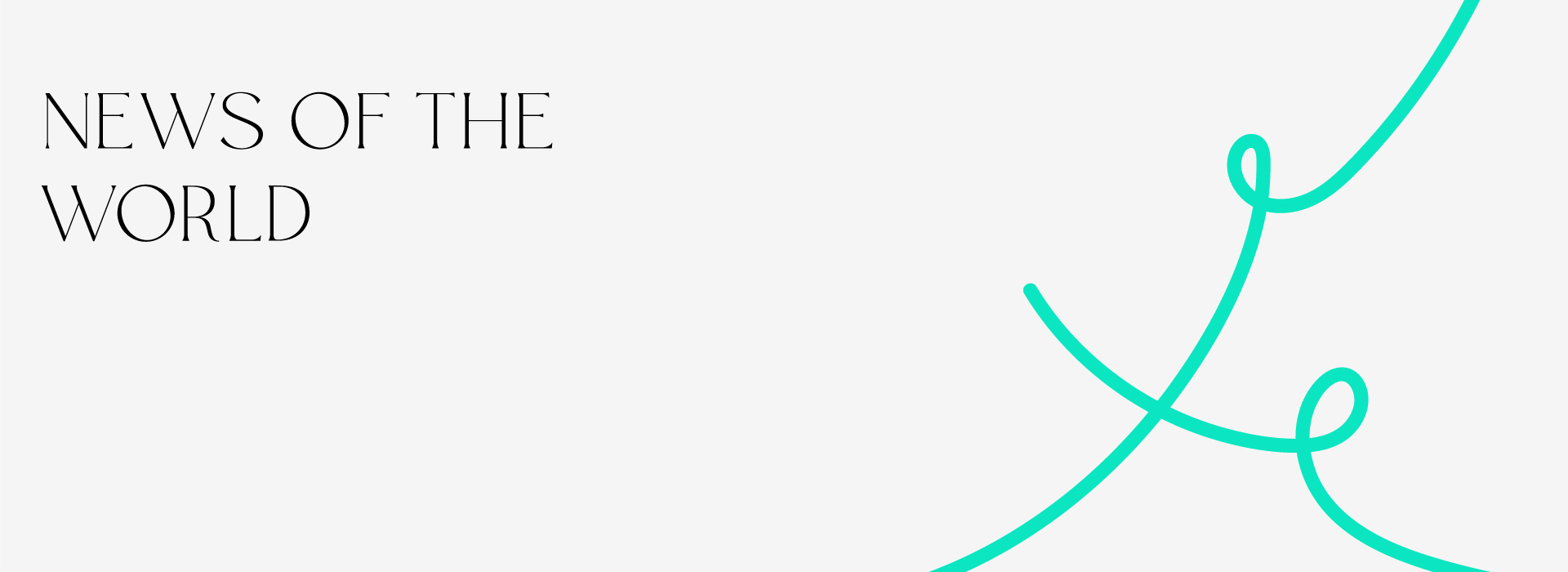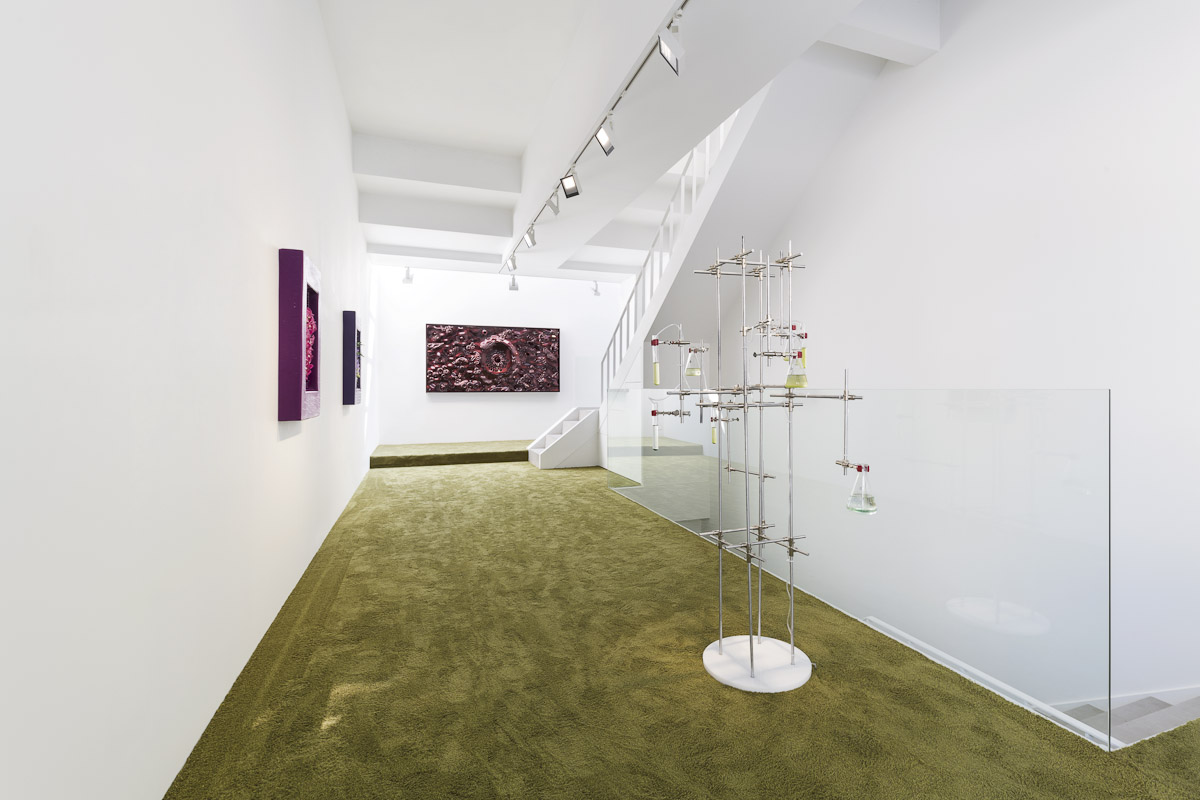
Anicka Yi, an artist with a talent for approaching contemporary issues with scientific research and artistic creativity, is holding her first solo exhibition in Korea, Begin Where You Are, at Gladstone Gallery until July 8. A Korean American artist, Anicka Yi made her debut at the relatively late age of 40 with her first solo exhibition but has continued to make an unrivaled name for herself, winning the Guggenheim Museum’s Hugo Boss Prize—the world’s most prestigious—just five years later, taking part in the Venice Biennale and more. This exhibition of the highly regarded artist gives visitors a chance to take an intense look into the artistic world she has created.
The exhibition immediately welcomes those who step inside the gallery. The green carpet covering the floor, paired with the natural light pouring in through the windows, put visitors in an atmosphere entirely different from that outside: The moss cultivation installation at the entrance looks like it belongs in a laboratory and highlights issues concerning environmental destruction, a recent focus of the artist. Grown by injecting a culture and air through a tube, the moss will continue to grow throughout the exhibition period, reflecting the way moss is spreading excessively due to global warming. The intrusion of living seaweed in a gallery made by humans also echoes the characteristics of Yi’s artwork, which transcends the relationship between species.
Such hybridity of species can also be seen in her Chicken Skin series, installed at the exhibition on the opposing wall. The frames made of silicone and fiber, resembling pores and hair, are reminiscent of animal skin, but artificial flowers at the center dismantle the ground between plant and animal and the distinction between the two is blurred. Such a blending of boundaries between easily recognizable objects is a major feature of Yi’s work, demanding that the viewer trek back and forth between cognition and the senses. The Anemone Panels, adorned with images of sea anemones, amoebas and corals, likewise focus on the relationship between living and nonliving things. Despite taking an organic form, its smooth surface is reminiscent of computer graphics, giving the impression of a virtual image that has suddenly emerged in the real, physical world.
In the basement of the gallery is one of Yi’s earliest works, her Tempura-Fried Flower series, which shows fully bloomed flowers battered, fried and preserved in resin as physical embodiments of sensory responses like taste, smell, saliva and sweat. The flowers, once symbols of nature’s beauty, fade in color after being fried by human intervention, and the resin turns these once-natural objects into artificial ones. This artistic approach exposes violence and disrespect while also stimulating viewers’ senses of taste and smell for its resemblance to cooking. The series is an example of the way Yi emphasizes process and context in her work, suggesting how important it is to recognize and think about the elements as a whole in order to fully appreciate her works.
Experiencing the works with your own eyes and body is a matter of both coming to understand them as well as a process of calling to mind all that with which we coexist in the world wherein once different things become compatible as they mix together, abolishing all boundaries previously set up by humankind. This is exactly what is suggested within the frame of the current Anthropocene era by posthumanism, which focuses on interactions between different beings as well as open-endedness. More and more artists are examining posthumanism in their works recently, and Yi is no exception. Her work in particular recognizes various media as vehicles for producing aesthetic meaning as opposed to mere tools, and her works expand the group of beings with agency to include an extensive spectrum of nonhumans, including microorganisms and air, commenting on one of the most important agendas of the present day: respecting diverse values and beings and coexisting together.
-
 Installation view, Anicka Yi: Begin Where You Are, Gladstone Gallery, Seoul, 2022. Photo: Chunho An Source: Gladstone Gallery(www.gladstonegallery.com)
Installation view, Anicka Yi: Begin Where You Are, Gladstone Gallery, Seoul, 2022. Photo: Chunho An Source: Gladstone Gallery(www.gladstonegallery.com)
TRIVIA
Posthumanism
A paradigm that moves beyond the modern dichotomy of anthropocentrism to a new understanding of humans, machines and all life. Posthumanism is an essential discourse for deconstructing the hierarchy inherent in the notion of being human and for overcoming the discrimination and exclusion it leads to. The theory stems from many discourses surrounding discrimination including postmodernism, feminist theory, postcolonialism, disability studies, animal studies and cyborg theory. In this way, the main tenet of posthumanism is to shape the world through the interaction of different agents and avoid limiting the scope of meaning and action to humans alone.
Unauthorized reproduction and distribution prohibited.

- [NoW] Thoughts on people today2021.11.19




- Dalí to Magritte2022.04.01


- My Your Memory2022.05.27
